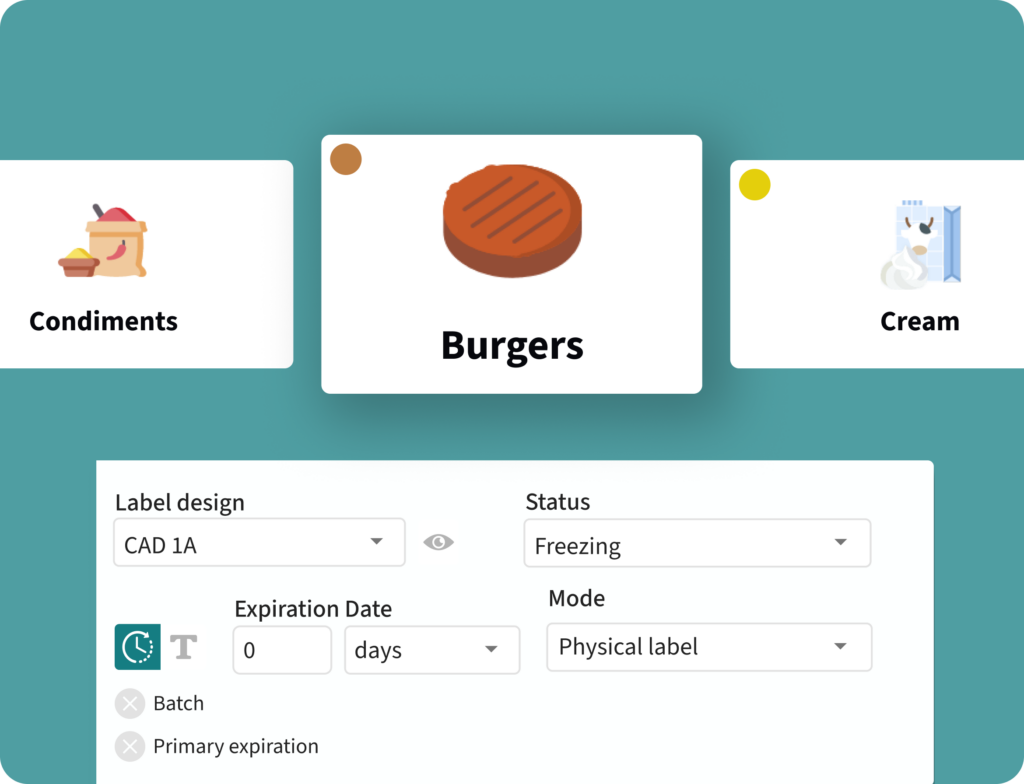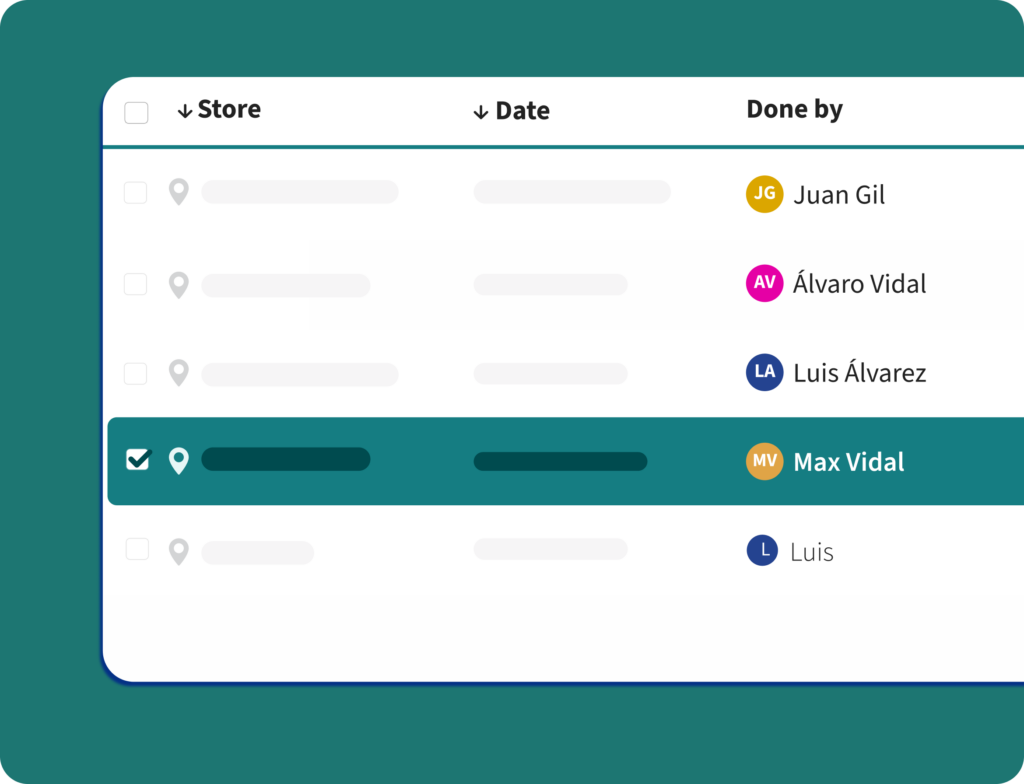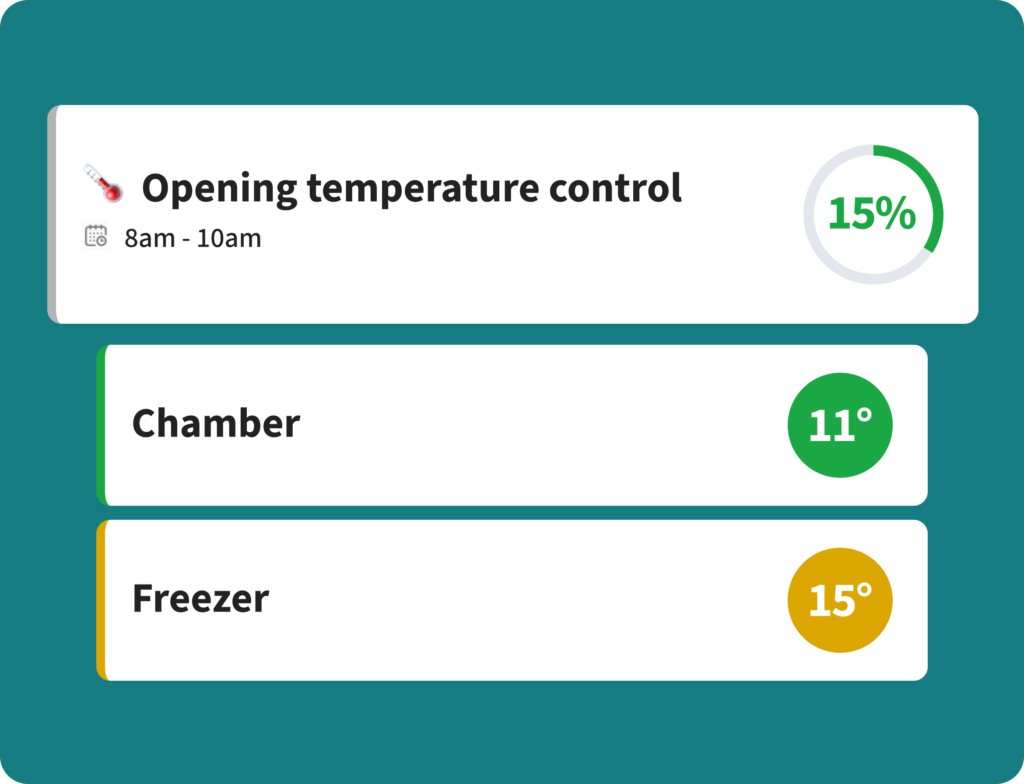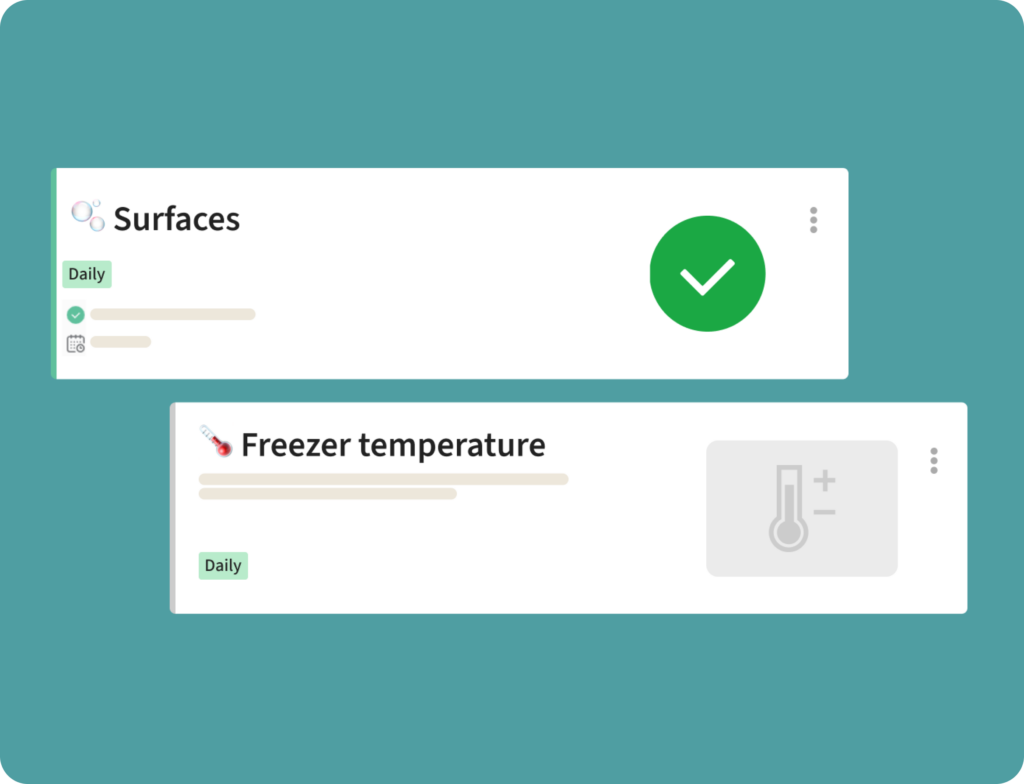The Power of Visuals: Why Andy’s Interface is a Game-Changer for Kitchen Teams
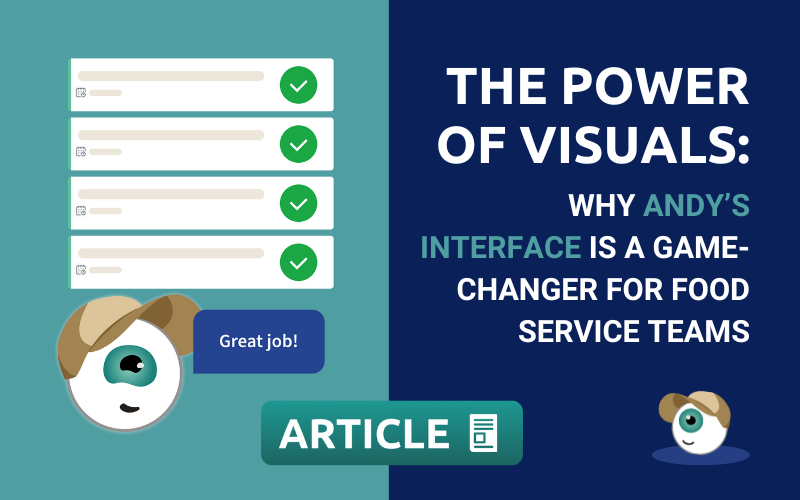
In the food service ecosystem, where every second counts and precision is key, the ability to quickly process information can make the difference between smooth operations and costly mistakes.
For this reason, we’ve built Andy’s interface to be not only functional but also incredibly visual.
Feedback from countless kitchen teams has shown that Andy’s intuitive design is one of its standout features.
The clarity and simplicity of the visual elements allow kitchen staff to engage with the app quickly, ensuring compliance with food safety standards, managing workflows, and minimising the risk of errors – all without having to spend time deciphering complicated menus or text-heavy interfaces.
But what makes being visual so important for an app used in a high-stakes, high-usage environment like a food service restaurant, hotel kitchen or supermarket?
Let’s take a closer look at why Andy’s user interface (UI) is crafted with a visual-first approach and why that approach is essential for kitchens striving for efficiency and safety.
Why Andy’s Interface is a Game-Changer for Kitchen Teams
1. Instant Clarity in a Busy Environment
Kitchen environments are notoriously busy, with multiple tasks happening simultaneously, often under time pressure.
Staff must juggle cooking, serving, cleaning, and ensuring food safety – all while under stress to meet customer expectations. In such an environment, an app that requires extra cognitive effort to understand is a hindrance.
Andy’s visual interface makes information instantly digestible.
Whether it’s food safety logs, maintenance updates, or compliance checklists, everything is displayed in a clear, easy-to-read format with high contrast and easy-to-interpret icons.
This reduces cognitive load for kitchen staff, enabling them to quickly understand what’s required without having to navigate through layers of information or cluttered screens.
Andy’s interface is designed to match the speed and complexity of kitchen workflows, making tasks like logging temperature or completing a compliance checklist faster and more efficient.
2. Reducing Errors Through Visual Cues
When working in a kitchen, even small errors can lead to significant problems, whether it’s a food safety violation, a missed order, or a wasted inventory item.
Andy’s visual cues help eliminate those risks by clearly highlighting what needs attention.
For example, the app uses color-coded alerts, icons, and visual progress bars to ensure staff can easily spot any issues. If a temperature is out of range or a task is incomplete, it’s immediately obvious.
There’s no need for staff to read long paragraphs of text or search through multiple pages to identify what’s wrong – Andy ensures that urgent tasks stand out, guiding users directly to what requires their attention.
This simplicity and directness help reduce the chance of human error, as kitchen teams don’t have to engage in extra mental processing to understand what needs to be done. They can immediately take action based on visual signals that guide them.
3. Faster Training and Onboarding
One of the most significant challenges in the food service industry is training new staff. In fast-paced environments, training often needs to happen quickly and efficiently. Andy’s visual interface plays a crucial role here by significantly reducing the learning curve for new users.
The visuals speak for themselves. Instead of having to memorise processes or recall complicated procedures, new employees can follow intuitive on-screen prompts and visual guides. For example, temperature logs, checklists, and even inventory levels are presented in a way that anyone, even with minimal training, can quickly interpret and manage. This helps new employees get up to speed faster and minimises errors caused by misunderstandings or lack of experience.
This ease of onboarding is crucial for kitchens with high turnover rates, where staff may be frequently changing. Having an intuitive, visually-driven app ensures that team members can adapt quickly, without needing constant guidance from more experienced workers.
4. Increased Efficiency Through Visual Workflow Management
Every kitchen relies on a set of routines, from cooking orders to managing inventory, and ensuring food safety compliance. Andy’s visual interface enhances this by streamlining workflow management.
Rather than having to manually track tasks or refer to physical logs and papers, Andy’s interface allows kitchen staff to see a complete overview of their tasks for the day, with clear visual indicators showing what’s been completed, what’s pending, and what needs immediate attention. For example, temperature logs or hygiene checklists can be completed with just a few taps, and the app immediately updates in real time, showing the current status.
This transparency and visual organisation of workflows help staff stay organised, and ensures that nothing gets overlooked, which is particularly important in the high-stakes environment of a kitchen.
5. Consistency Across Devices
In many food service establishments, staff might use a mix of devices throughout their shifts – tablets, phones, or even desktop computers. Andy’s visual-first design ensures that the experience remains consistent across different devices.
The layout, icons, and interface elements adapt seamlessly to the screen size, whether it’s on a mobile phone or a larger tablet.
This consistency means that staff don’t need to reorient themselves or adapt to new interfaces when switching between devices, allowing them to stay focused on their tasks.
6. Improved Communication Across Teams
A visual interface also improves team communication, which is vital in high-volume food service brands.
Staff are often working in different stations and may not always be in the same room to discuss things in person. Andy’s interface ensures that information is shared clearly and immediately across the team.
For example, if one station is low on inventory or if a task is overdue, the visual alerts will be seen by everyone, ensuring that the team is always on the same page. This immediate visibility enhances coordination and reduces the chance of miscommunication or missed tasks.
7. User-Centric Design for High-Volume Usage
When designing an app for food service, it’s crucial to remember that it’s not just any software – it’s software used frequently, under pressure, and by people who need results now. Kitchens don’t have time for apps that are difficult to navigate or require users to search for information.
That’s why Andy’s user-centric design prioritises speed, efficiency, and ease of use, all through visual means.
Every visual element of Andy, from its clean layout to its intuitive icons, is designed with one goal in mind: helping kitchen teams do their job better, faster, and with fewer mistakes.
Andy’s Interface: The Visual Advantage
Andy’s visual approach to food safety and operations isn’t just a nice-to-have—it’s a necessity in the fast-paced, high-pressure world of kitchens.
By using clear, intuitive visuals, we’ve created an app that not only improves food safety and operational efficiency but also makes everyday tasks simpler for staff at all levels.
In an industry where time is money, and mistakes are costly, Andy’s visual-first design is the smart choice that empowers teams to perform at their best.



